Summer is taking its own sweet time warming up this year – making gardening in Alaska feel a bit unsure! It’s taking long enough that I’m starting to wonder if it will come at all. I was looking through my Facebook memories and it seems we had a summer 11 years ago that was similar to this; very little sun, very little heat, and lots of overcast and rainy days.
This actually started me thinking: What are some things in my garden that will struggle if we don’t heat up this summer and what can I do to either preserve what I have or figure out something different? We use our garden to feed our family all winter so losing it all to cold weather is just not an option. I can’t control the weather (nor would I want to) but I CAN control the environment my plants are in and how they are taken care of.
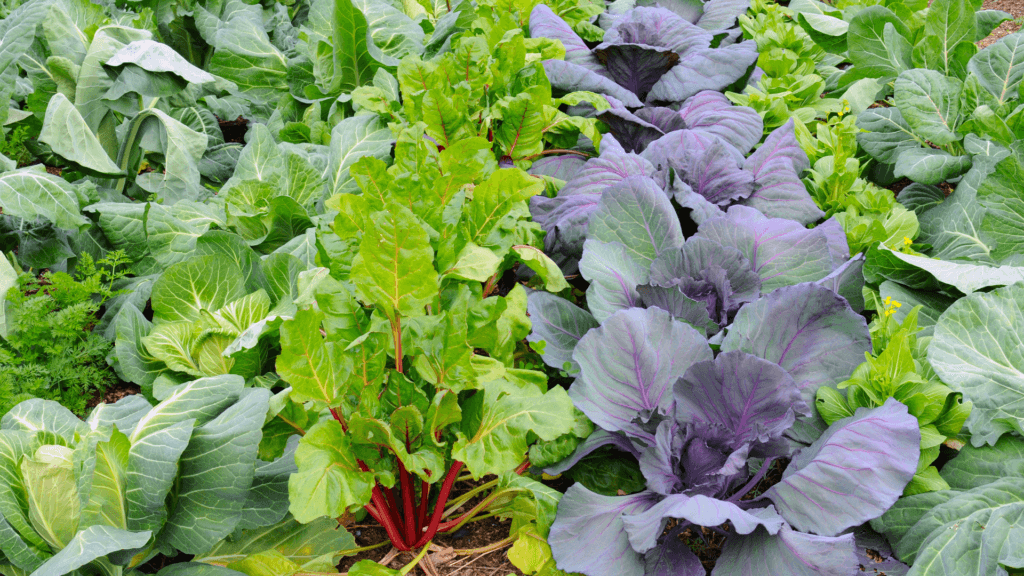
The way I see it, we have three options although the first one isn’t really an option for me. Here’s how we can make the most of this summer of 2023 that never was.
GIVE UP:
No way! This is Alaska. We’re not quitters and if we’re going to live sustainably, we’ve got to figure things out, even when the weather (or anything else) doesn’t cooperate.
Sustainability, feeding my family heathy food, and sharing with my friends, family, and community is important to me so I don’t just plant a bit to play with – I plant for abundance!
Giving up isn’t an option. So …
Here are some ideas to IMPROVISE:
The first idea is pretty simple. Put some plastic on your garden beds to help warm your plants. You can use bendable PVC plastic and curve it over your beds, put the plastic over, and secure it with clips (or even clothespins). It’s simple, it’s cheap, and it’s effective! You don’t have to use greenhouse plastic, even. I have a roll of 1.2 mil plastic that I’m using. It was cheap and it’s super easy to work with. Amazon has this plastic that would totally work for just $8. I use cheap clips like these unless I run out, then I use clothespins. Keep it simple and cheap, I always say!
However, there are some cautions when you do this so be sure to think ahead:
- It can get really warm really fast when the sun does come out so you can’t just leave the plastic without watching things. You can easily burn your plants if you just put the plastic on and forget it.
- When it rains, water can’t get in so you will need to keep your plants watered under the plastic even if it’s rainy out.
- Condensation can build up and create mold so make sure there is airflow.
- Pollinators can’t get to your plants so you have to make sure to give them a way to get to your plants.
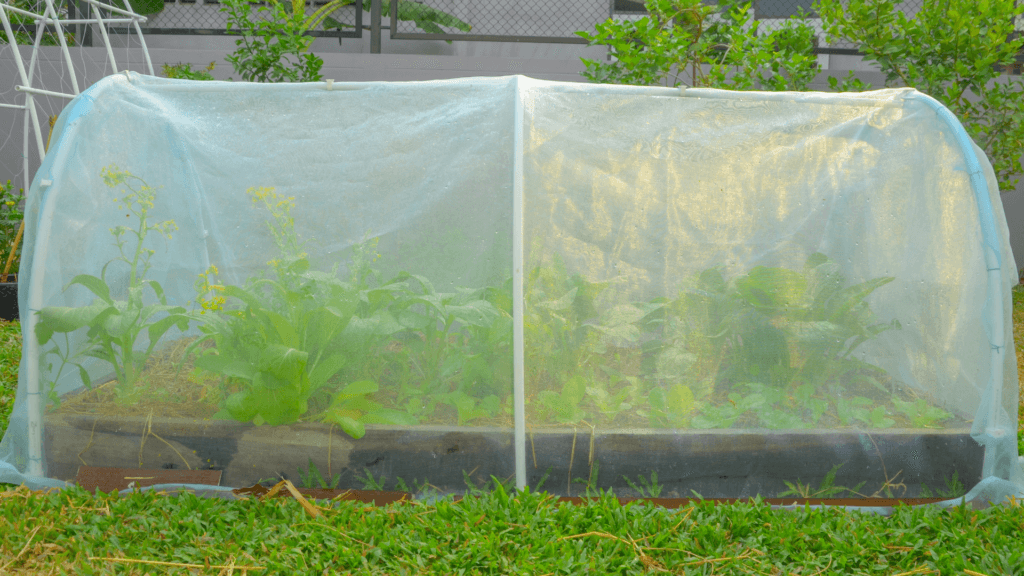
Another precaution is to either warm your soil or don’t plant long germinating seeds in the ground. Your seeds may not be able to germinate if the soil is too cool and if the soil is continually soppy from the rain, they will just rot. It is best to sprout your seeds before planting them, especially the ones that take awhile to germinate.
However, as a note of encouragement, I planted my beans outside just last week. Yes, I’m way behind and I know it. It is what it is. I just dug up a seed today to see how it’s doing and it’s sprouting! This is a Provider green bean so I’m thinking they are pretty darned hardy! I did cover the soil today for them so they will get warmer and hopefully sprout faster.
A super cute idea I came across this week is to put clear umbrellas over small crops in your garden. I think it’s an adorable idea and I found a deal on Amazon for 12 umbrellas (good sized ones), for $70! It’s pricy but how whimsical! The advantage to these is that you can just lift them up to allow for airflow and pollinators, then put them back down in the evenings to hold in the heat. Such a fun idea!
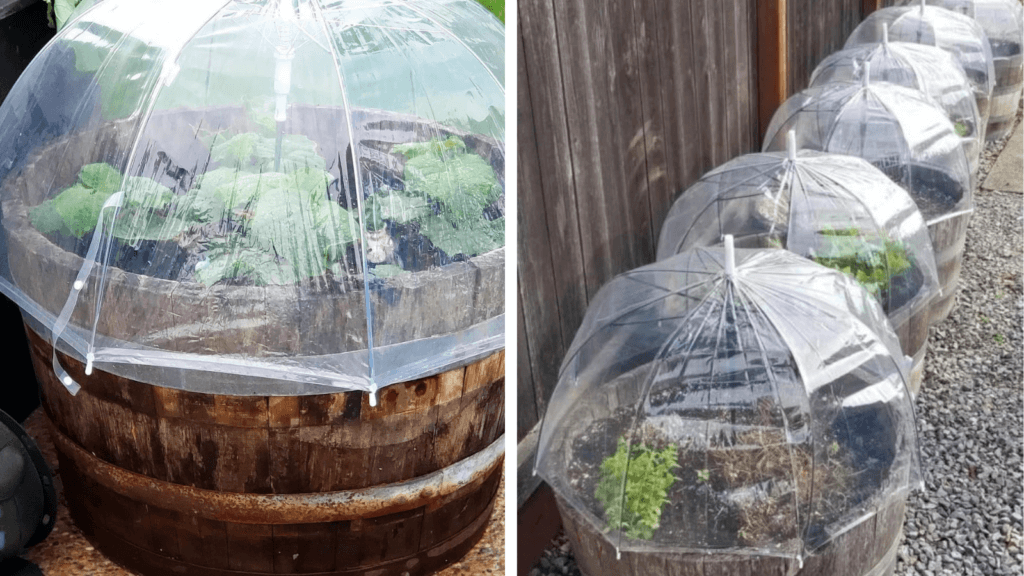
In our greenhouse, we actually improvised to increase the heat on our plants this year as well. Even the greenhouse is struggling to be warm enough on some days. Our big improvisation this year is to put the plants all on shelves so they are higher and in the warmest part of the greenhouse. The tomatoes and bell peppers are in pots and are on shelves. I’m also planting a few green beans and cucumber plants in pots and hanging them so they will be up where there is the most heat.
Another option is to FLIP THE SCRIPT:
Make changes to your food preservation plans now so you’re not disappointed in the fall. Find recipes for using green tomatoes, figure out how to use smaller squash in recipes, and consider planting more brassicas on the double!
Root veggies and brassicas love this weather as do spinach, lettuce, kale, and a few other cold weather crops. I am actually changing things up a bit so that I can preserve more brassicas and crops that WILL do well this summer so that I’m not disappointed come fall.
I always put up 52 quart bags of frozen cauliflower and another 52 bags of broccoli. That gives us broccoli and cauliflower once per week which takes care of our veggie twice per week. Because I may not have as much of other things like squash and tomatoes this year, I’m planning to do an extra 52 bags of broccoli and cauliflower this year. Yes, that means broccoli or cauliflower another time each week but it’s either that or buying stuff from the store. I’d much rather eat what I’ve grown and this is a simple solution.
Also, our potatoes are rocking it so we will rely heavily on our potato production this year, too.
Root crops like rutabagas and turnips are also going to be found regularly in our meals this winter so I’m learning new ways to prepare them.
Did you know you can ripen tomatoes even if they are picked green and hard? It’s true! I stick ours in a single layer of a crate and cover with a towel and they ripen beautifully! They don’t taste quite as amazing as vine ripened but they sure taste better than store bought. The cooler you keep them the longer they take to ripen. I’ve never quite made it to Thanksgiving but that’s my goal this year!
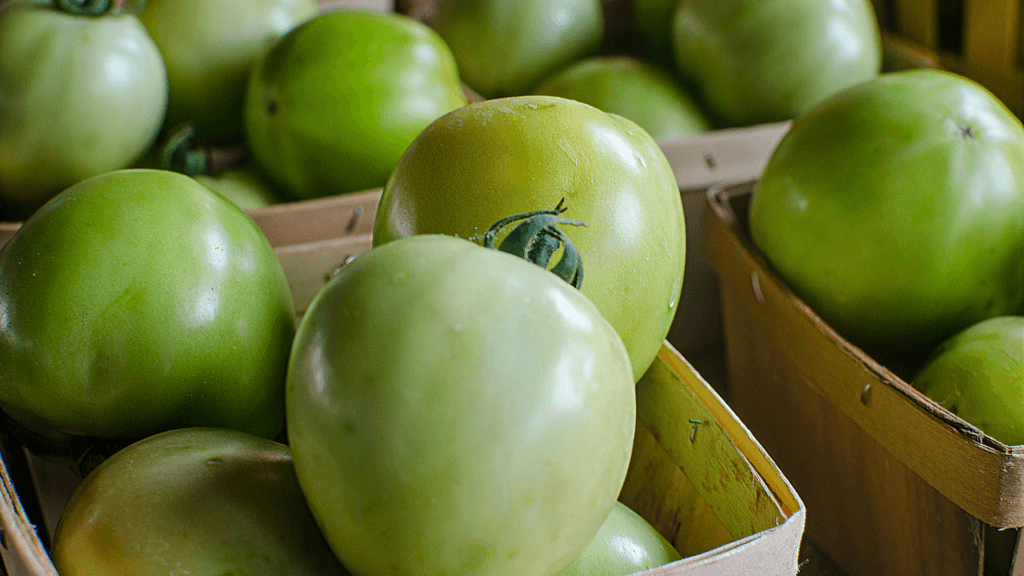
Also, our cold-hardy perennials are rocking it as usual this year. The apples are late but they are moving along! They honeyberries, currants, and saskatoons seem to be unfazed and they are getting ready to produce a bumper crop.
A final word – A CHANGE WE OPTED TO MAKE:
I posted this announcement on Facebook today:
–
Announcement:
It is with heavy (yet hopeful) hearts that we have decided to take the cantaloupeplants out of the greenhouse and replace them with strawberries.
We’ve been growing cantaloupe commercially for Alaskans for 5 years. Making this decision was tough but the plants simply weren’t thriving or growing with the currentsummer conditions.
We’ve seen summers like this before and they typically turn out to be cold,dreary, and
rainy for the season. Rather than fighting the weather, we opted to embrace it and replace our heat and
sun-dependent crop on a plant that’s much more reliable for cooler temps.
Cantaloupe is our least revenue making crop – we grow it mostly as a novelty and Gene was confident we would get little or no production.Our farm motto is: We are a teaching farmstead that feeds Alaskans.We take the job of providing healthy, high quality Alaska-grown foods to our customers very seriously. This helped us make the decision to go withstrawberries for this season because they are much more cold weather friendly and we hope to get a good harvest for you.
It’s actually pretty cool – God provided more strawberries than we needed this year (which is a first) and I wasn’t sure where to plant them. Turns out, He was providing before we had any idea we needed provided for.
So, strawberries it is! Onward to a bountiful harvest and freezers full of all things berries.Next year: we are hoping for more sunshine and lots of yummycantaloupe. This year: we are counting our blessings, flexing our trust muscles, and enjoying the season.
Here’s the deal – we have to keep our eyes on the ultimate prize which is to harvest and put by good food to feed your family. Sometimes that means making changes or amending things for success.
I would love to hear your ideas for reaping a harvest in this not-so-stellar summer. 🙂
PS – we all know you’re still going to have plenty to preserve this summer so be sure to join us for our SUMMER FOOD PRESERVATION MASTERCLASSES! We are offering a canning masterclass, fermenting, alternate food storage (covering all of the other preservation methods), and sourdough. Grab your tickets here: https://commongroundalaska.com/product-category/classes/
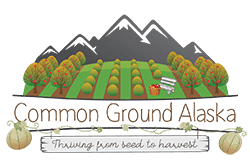
Thank you for sharing! These are very helpful tips as the struggle is real! It hasn’t made it up to 70 F yet this year in Anchorage.
Right? We need SUNSHINE!
Growing extra broccoli, cauliflower, and other greens sounds like a great plan for this summer. Do you think there is time to still start these extras from seed for a fall harvest or would you recommend buying starts? Thanks!
I would probably get plants somewhere if you can find them just because time is not on our side this year. Beaver Lake Birds and Bushes (I can’t ever remember their name but it’s something like that) has quite a few plants left and they are super reasonable!